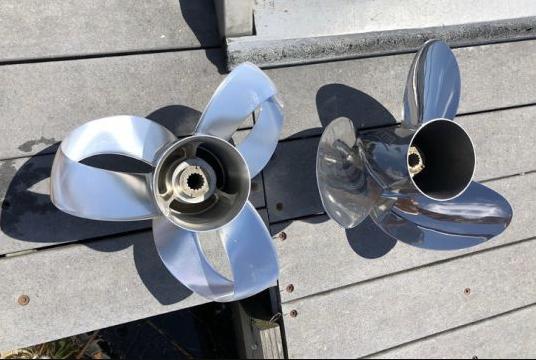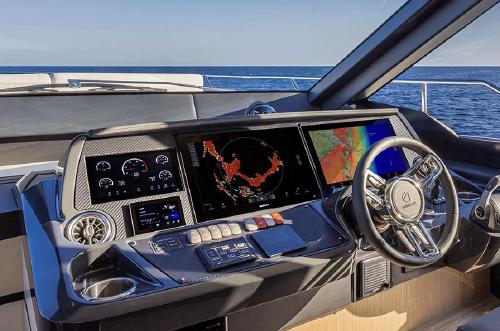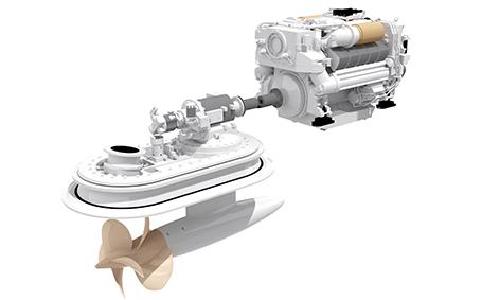Choosing the right propeller is critical for optimizing your boat’s performance. In today’s marine propulsion landscape, the debate between Sharrow propellers and conventional propellers continues to grow. With fuel efficiency, thrust, and cavitation all on the line, boat owners are asking: which design truly performs better?
This article dives into the science and technology behind both types, including how cupping can improve conventional propellers and where each design excels—or falls short.
What Are Sharrow Propellers?
Sharrow propellers are a modern breakthrough in marine propulsion, developed by Sharrow Marine. Their distinct looped blade design sets them apart from traditional straight-blade props. This innovative form enhances lift, reduces cavitation, and minimizes vibration and underwater noise.
Instead of cutting through water with abrupt angles, the Sharrow’s blades form continuous loops. This reduces tip vortex cavitation, a major contributor to drag and blade erosion in standard props. As a result, Sharrow propellers deliver:
- Greater thrust at lower RPMs
- Improved fuel economy
- Quieter operation
- Reduced engine strain
These features make Sharrow props especially attractive for high-performance recreational boating and applications where comfort and efficiency matter.
How Do Conventional Propellers Work?
Conventional propellers, often called fixed-pitch propellers, have been the marine industry standard for generations. Their design consists of multiple straight blades attached to a central hub. When the prop spins, it pushes water backward, propelling the boat forward.
While straightforward and time-tested, traditional props have some limitations:
- More prone to cavitation at high speeds
- Can cause vibration and noise
- May require fine-tuning for peak efficiency
That said, conventional propellers remain cost-effective and widely available, making them ideal for casual boaters or vessels with consistent speed needs.
What Is Cupping and Why Does It Matter?
One way to improve the performance of a conventional propeller is through cupping. This involves adding a slight curve or “lip” to the trailing edge of the propeller blade. The result?
- Increased lift and improved top-end speed
- Reduced cavitation and slippage
- Enhanced fuel efficiency under load

Cupping alters the water flow off the blade, helping to stabilize performance and decrease prop damage. However, too much cupping can overload your engine, so it’s critical to fine-tune it based on your boat’s specs and usage.
Sharrow vs Conventional Propellers: A Head-to-Head Comparison
Here’s a breakdown of how these three propeller types compare across key performance metrics:
| Feature | Sharrow Propeller | Conventional Propeller | Cupped Conventional Propeller |
|---|---|---|---|
| Design | Looped blade | Straight blade | Straight blade with trailing edge cup |
| Thrust Efficiency | High, even at low speeds | Moderate | Improved low-speed thrust |
| Cavitation | Very low | Moderate to high | Reduced compared to uncupped |
| Noise & Vibration | Significantly reduced | Can be noisy and vibrate at speed | Slightly reduced with proper tuning |
| Fuel Efficiency | Excellent | Variable | Better than uncupped |
| Maintenance | Low (less cavitation damage) | Potential for higher maintenance | Moderate (benefits from reduced cavitation) |
| Cost | Higher upfront investment | More affordable | Slightly more than uncupped |
While Sharrow propellers lead in innovation and performance, they come at a premium price. Standard conventional props remain a cost-effective and familiar option. However, cupped conventional propellers offer a compelling middle ground — delivering better efficiency, reduced cavitation, and improved performance, especially at lower speeds, without the high cost of a Sharrow.
Which Propeller Is Right for You?
The right propeller depends on your boating habits, vessel size, and performance goals.
- Choose Sharrow if you’re focused on maximum efficiency, reduced engine wear, and quieter operation.
- Choose conventional props with cupping if you want a cost-effective option that can be fine-tuned for solid performance.
For high-speed vessels, fuel-conscious boaters, or premium leisure craft, Sharrow is a standout. But for smaller boats or more casual usage, a well-cupped conventional prop can still get the job done.
Final Thoughts on Sharrow vs Conventional Marine Propellers
Understanding the science behind your boat’s propulsion system can help you make smarter choices—and enjoy better days on the water. Whether you go with a Sharrow propeller for advanced efficiency or stick with a conventional propeller enhanced by cupping, the key is matching the prop to your specific vessel and boating style.
Before upgrading, consult a marine technician or prop specialist to ensure the best performance and fit for your setup.




Use the share button below if you liked it.